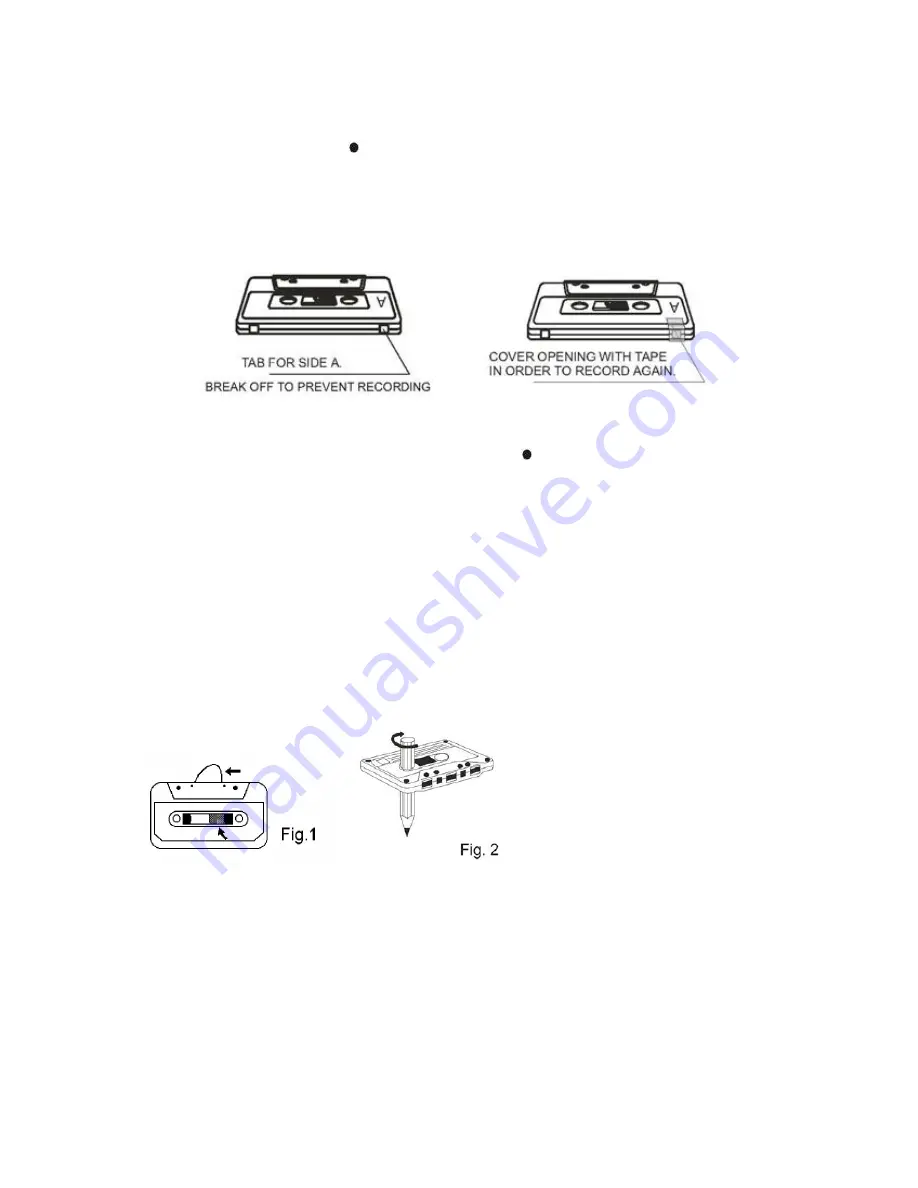
E
‐
13
wish to save, blank cassettes are equipped with erase prevention tabs for each side of
the tape. If the erase prevention tab for side A is removed, you cannot accidentally
record on side A. The Record key cannot be depressed if the erase prevention tab on
the cassette has been removed.
To prevent accidental erasing on side A of a cassette use a small screw driver or similar
tool to break off the erase prevention tab for side A. This prevents the record key form
locking.
If later you do wish to record on side A of the cassette, cover the tab opening with a
piece of cellophane tape. This will allow the Record to function again.
CASSETTE CARE
Two common causes of trouble experienced when using cassettes are:
1) Tape Jamming – Leading to uneven speed in playback, and
2) Tape Tangling – Where the tape wraps itself around ital parts of the
mechanism.
To reduce the likelihood of these problems occurring, the following precautions
should be observed:
Check that there are no loose layers of tape visible through the cassette center window (see
Fig. 1). Take up any loose layers, using a pencil or hexagonal barreled ballpoint pen, before
inserting the cassette into the machine (see Fig.2)
If the cassette feels tight while performing operation shown (see Fig.2), the tape may
be jamming due to ridges formed in the winding of the tape (visible through the
center window). These may be removed, in most cases, by fast winding of the
cassette from one end to the other and back again.
Use only well-known brands of tape. Avoid use of C-120 cassettes.
Furthermore, do not expose cassettes to direct sunlight, dust or oil, and do not
touch the tape surfaces.
Summary of Contents for SB2135
Page 1: ...E 1 ...
Page 7: ...E 7 ...
















